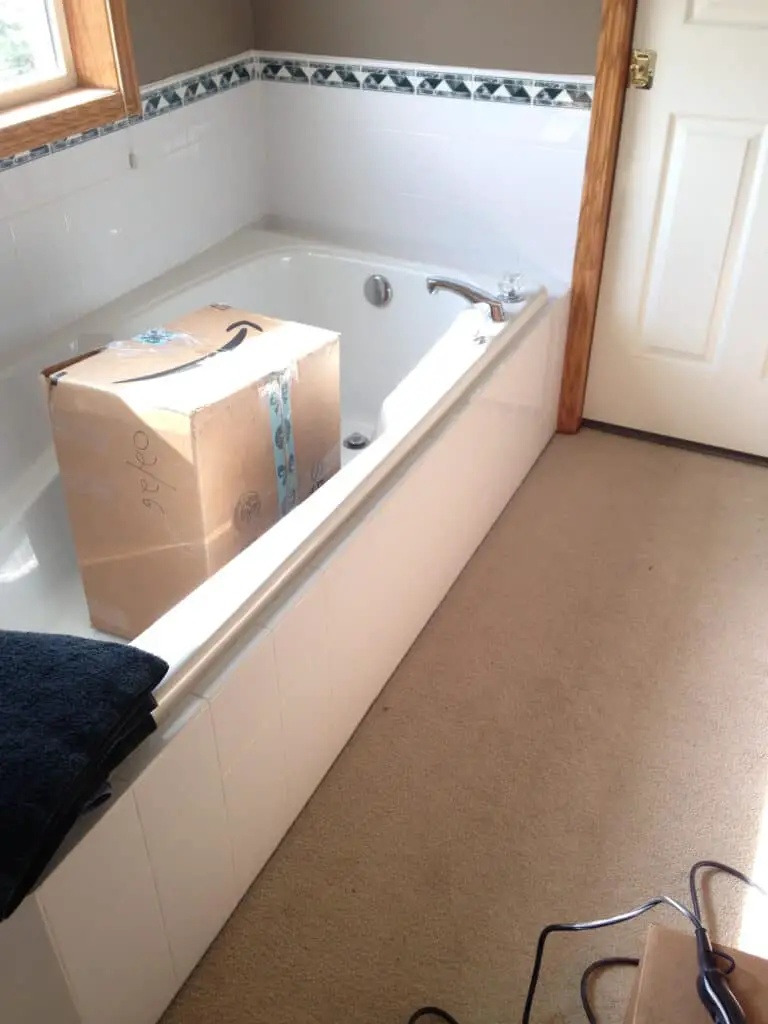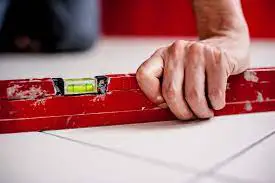Hey there! Are you thinking about giving your bathroom a makeover by replacing your old bathtub with a shiny new one? That’s a great idea!
A new bathtub can completely transform the look and feel of your bathroom, and it can even increase the value of your home. But before you start tearing out the tub, you might be wondering: can you remove a bathtub without damaging those beautiful tiles that you spent a small fortune on?
Well, the good news is that with a little bit of planning and some careful execution, it is possible to remove a bathtub without ruining your bathroom’s tiles.
In this blog, we’ll go through the steps you need to take to remove a bathtub safely and efficiently, so you can get your new tub installed and start enjoying your updated bathroom as soon as possible.

Why Should You Want to Remove a Bathtub?
There could be any number of reasons why you want to get rid of your bathtub. Maybe it’s just not your style anymore, or maybe it’s not as practical as it used to be.
Maybe you’re tired of clambering over the side to get in and out, and you want to install a walk-in shower instead. Or maybe you just want to free up some space in your bathroom by replacing your tub with a more compact shower unit. Whatever the reason, it’s important to consider whether removing the bathtub is really the right decision for you and your bathroom.
If you’re not sure, it might be a good idea to consult with a bathroom design professional or a contractor who can help you weigh the pros and cons and determine the best course of action. If you do decide to go ahead with removing the bathtub, it’s also a good idea to think about what you want to replace it with.
Do you want a traditional shower, a walk-in shower, or a freestanding tub? What style and finish do you want? How will the new bathtub fit into your overall bathroom design?
Answering these questions before you start the removal process can help ensure a smooth and successful renovation. Overall, removing a bathtub is a big undertaking that requires careful planning and execution. But with the right approach, you can successfully remove your old bathtub and install a new one, all while keeping your tiles intact and your bathroom looking beautiful.
Assessing the situation
Before you start yanking out your bathtub, it’s a good idea to assess whether it’s even possible to do so without damaging the tiles. There are a few things to consider here. First, how old are the tiles? If they’re pretty old, they might be more brittle and prone to breaking.
This is especially true if the tiles are made of ceramic or porcelain, which can become more fragile over time. If your tiles are older and you’re concerned about their condition, it might be a good idea to have a contractor or tiler assess them before you start the removal process.
Second, what’s the condition of the grout? If the grout is in good shape, it’s less likely that the tiles will be damaged during the removal process. On the other hand, if the grout is cracked or missing in places, it might be more difficult to remove the bathtub without damaging the tiles.
In this case, it might be a good idea to have a contractor or tiler repair or replace the grout before you start the removal process. Finally, how was the bathtub installed? If it was installed using a lot of adhesive, it might be more difficult to remove without damaging the tiles.
In this case, it might be necessary to use a combination of pries, and cuts to loosen the tub from the adhesive and remove it safely. If the bathtub was installed using a different method, such as screws or nails, the removal process might be simpler.
Overall, the key to removing a bathtub without damaging the tiles is to assess the condition of the tiles and the method of installation and take appropriate precautions based on these factors.
With a little bit of planning and careful execution, it is possible to remove a bathtub without ruining your bathroom’s tiles.
Preparing for the removal
Okay, so you’ve decided that removing the bathtub is the way to go, and you’ve assessed the situation and determined that it’s possible to do so without damaging the tiles. Great! Now it’s time to get everything ready.
First and foremost, you’ll need to shut off the water supply to the bathtub. You don’t want to be standing in a flood of water when you start pulling the tub out! The shut-off valve for the tub is usually located on the wall behind the tub or under the sink. If you’re not sure where to find it, you can consult your home’s plumbing diagram or ask a plumber for assistance.
Next, you’ll want to empty the tub of any water or other debris. If there’s water in the tub, you can simply use a towel or sponge to soak it up. If there are any toys, soap, or other items in the tub, remove them as well. This will make it easier to work around the tub and reduce the risk of tripping or slipping.
Finally, gather all the tools and supplies you’ll need, including a pry bar, a hammer, a drill, and some protective eyewear. You might also want to have some rags or towels on hand to clean up any messes, and a dustpan and broom to sweep up any debris.
Overall, preparing for the removal of a bathtub involves shutting off the water supply, emptying the tub, and gathering the necessary tools and supplies. By following these steps, you’ll be ready to tackle the removal process with confidence and efficiency.
Removing the bathtub
Alright, it’s time to get down to business! The exact process for removing a bathtub will depend on how it was installed, but there are a few general steps you can follow.
First, use the pry bar and hammer to loosen any caulk or sealant around the edges of the tub. This will help you get a better grip on the tub and make it easier to lift out. Be sure to wear protective eyewear to shield your eyes from any debris or dust that might fly up as you work.
Next, use the drill to remove any screws or nails holding the tub in place. These are usually located at the base of the tub, around the drain, and at the back of the tub where it meets the wall. Again, be sure to wear protective eyewear and keep your face and hands out of the way of the drill bit as you work.
Once the tub is loose, you can gently lift it out of the opening, taking care not to bump or scrape the tiles. If the tub is heavy, you might need to enlist the help of a friend or hire a professional to assist with the lifting. If you do decide to hire a professional, be sure to choose one with experience in bathtub removal to ensure a smooth and safe process.
Overall, the key to removing a bathtub without damaging the tiles is to work carefully and deliberately, taking the time to loosen the tub and remove any screws or nails before attempting to lift it out.
With a little bit of patience and careful execution, you can successfully remove your old bathtub and prepare to install a new one.
Repairing or replacing damaged tiles
Unfortunately, even with the best planning and execution, there’s always a chance that something could go wrong and you could end up with damaged tiles during the bathtub removal process.

If that happens, don’t panic! Depending on the extent of the damage, you might be able to repair the tiles using a repair kit or by replacing individual tiles. If the damage is minor, such as a small chip or crack, you can use a tile repair kit to fill in the damaged area and restore the tile to its original appearance.
These kits are available at most home improvement stores and typically include a filling compound, a colorant, and a sealant. Simply follow the instructions on the kit to mix the compound and colorant, apply it to the damaged area, and allow it to dry.
Once it’s dry, you can apply the sealant to protect the repair and give the tile a glossy finish. If the damage is more severe, such as a large crack or a missing tile, you might need to replace the entire tile.
This can be a bit more complicated, as it involves removing the old tile, installing a new one, and grouting it in place. If you’re not comfortable with this type of work, it might be a good idea to hire a contractor or tiler to do the job for you.
To replace a tile, you’ll need to remove the grout around it using a grout saw or a utility knife. Once the grout is removed, you can gently pry the tile loose using a flat tool like a screwdriver or a chisel. Be sure to wear protective eyewear and work slowly and carefully to avoid damaging the surrounding tiles.
Once the old tile is removed, you’ll need to clean the area and prepare it for the new tile. Use a scraper or a wire brush to remove any excess grout or adhesive, and then wipe the area clean with a damp cloth.
If the subfloor is damaged or uneven, you may need to repair or level it before installing the new tile. To install the new tiles, you’ll need to apply adhesive to the back of the tiles using a notched trowel, and then position the tiles in place, making sure to keep them level and evenly spaced.
Once all the tiles are in place, you can grout the joints as described above. Overall, repairing or replacing damaged tiles involves assessing the extent of the damage and choosing the appropriate approach based on the severity of the damage and your overall goals for the project.
Whether you decide to repair the tiles, replace individual tiles, or replace an entire section of tiles, it’s important to work carefully and follow proper techniques to ensure a successful and long-lasting repair or installation.
With a little bit of patience and careful execution, you can successfully repair or replace damaged tiles and get your bathroom looking beautiful again.
Conclusion
So there you have it: a step-by-step guide to removing a bathtub without damaging the tiles. With a little bit of planning and some careful execution, it is possible to give your bathroom a fresh new look without ruining the tiles.
But don’t just take our word for it! If you’re planning to remove a bathtub, it’s always a good idea to do your own research and consult with professionals to get the best advice and guidance.
A bathroom design professional or a contractor can help you assess the condition of your tiles and the method of installation, and can provide recommendations on the best way to proceed.
If you do decide to tackle the removal process yourself, be sure to follow all safety precautions and use proper tools and techniques. Removing a bathtub can be a physically demanding task, so be sure to take breaks as needed and enlist the help of a friend or professional if necessary.
And if you do encounter any problems or setbacks, don’t be afraid to ask for help! There are plenty of resources available online and in your local community to help you troubleshoot and solve any issues that might arise.
Overall, removing a bathtub without damaging the tiles is a big undertaking, but with the right approach and a little bit of help, it’s definitely possible. So don’t be afraid to take on this exciting and rewarding project, and happy remodeling!
